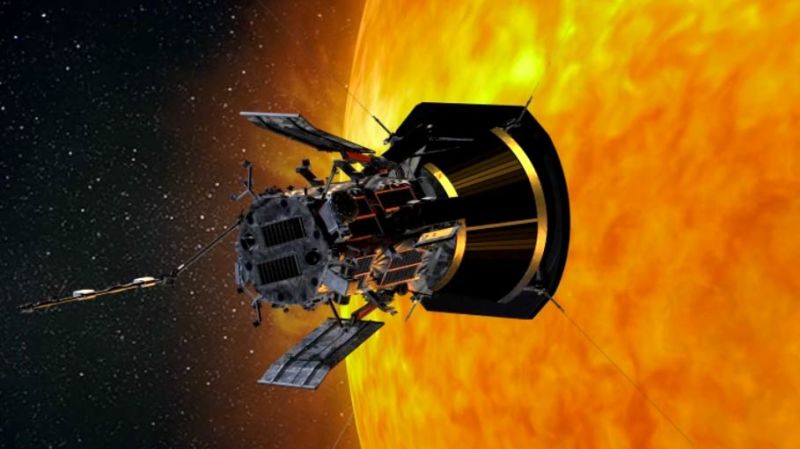The Parker Solar Probe is set to make history on Tuesday as it embarks on a record-breaking flyby of the sun, coming within an astounding 3.8 million miles (approximately 6.1 million kilometers) of the solar surface. This event marks humanity’s closest approach to a star, breaking new ground in the exploration of our solar system. As part of its mission, the uncrewed spacecraft will travel at a staggering speed of 430,000 miles per hour (692,000 kilometers per hour), which is so fast that it could travel from Washington, D.C., to Tokyo in less than a minute. According to NASA, this ultra-rapid flyby will make the probe the fastest human-made object in history, emphasizing the technological advancements that have made this mission possible.
Launched on August 12, 2018, the mission has been a focal point for the scientific community, as it is named after Dr. Eugene Parker, an eminent astrophysicist renowned for his groundbreaking work in the field of heliophysics. Dr. Parker was the first living individual to have a spacecraft named after him, reflecting the significant impact of his research on our understanding of solar phenomena. He passed away in March 2022 at the age of 94 but had the opportunity to witness the advancements made in solar exploration well over half a century after he first proposed this mission.
The Parker Solar Probe has already made history by being the first spacecraft to “touch the sun,” successfully flying through the sun’s corona—the outer atmosphere of the sun—in December 2021. This milestone has provided researchers with crucial data that enhances our understanding of various solar mysteries, including the generation of solar winds and the perplexing phenomenon of the solar corona being hotter than the sun’s surface.
As the mission unfolds, scientists are keenly interested in understanding coronal mass ejections—massive bursts of solar wind and magnetic fields rising above the solar corona or being released into space. When directed towards Earth, these eruptions can lead to geomagnetic storms, which have the potential to disrupt satellites and power infrastructures, displaying the importance of studying solar patterns and behaviors.
With the Parker Solar Probe’s closest and final flybys on the horizon, researchers are eager for the outcomes these approaches will yield. Helene Winters, project manager for the Parker Solar Probe at Johns Hopkins University’s Applied Physics Laboratory, highlighted that the probe is poised to change the field of heliophysics, braving previously unencountered solar phenomena with remarkable resilience.
The upcoming flyby will take place around 6:53 a.m. ET on Christmas Eve, serving as the first of three final close approaches, with the subsequent encounters scheduled for March 22 and June 19. The remarkable proximity of the probe during these flybys will allow it to gather data from a mere 4 yards away on a scale analogous to an American football field, pushing the boundaries of current celestial exploration.
Equipped to withstand the sun’s extremes, the Parker Solar Probe features a 4.5-inch (11.4-centimeter) carbon foam thermal shield capable of enduring extraordinarily high temperatures—up to 1,800 degrees Fahrenheit (980 degrees Celsius) during close encounters. In stark contrast, the spacecraft’s internal components will be maintained at a comfortable room temperature via a unique cooling system that circulates water through the solar arrays.
Given that the flyby will occur autonomously due to the signal disruption that accompanies such close proximity to the sun, the probe will send a beacon tone back to mission control after the approach to relay its condition. However, comprehensive data and imagery collected during the flyby will not be available until Parker moves away from the sun, with insights expected approximately three weeks later in mid-January.
The sun is currently experiencing its solar maximum, a period when solar activity peaks within its 11-year cycle and is marked by an increase in sunspots and solar flares. Given the heightened solar activity—including significant auroras that have been seen as far south as the equator earlier this year—scientists hope that the data collected via the Parker Solar Probe will provide critical information for future solar storm predictions.
As message from Dr. C. Alex Young indicates, the solar research facilitated by the Parker Solar Probe will not only deepen our understanding of the sun and its relationship with the Earth but also offer essential insights relevant to all stars and planetary systems in the universe. Researchers remain hopeful for the probe’s close encounters, wishing for dramatic solar phenomena to provide rich data for ongoing studies in solar science.



